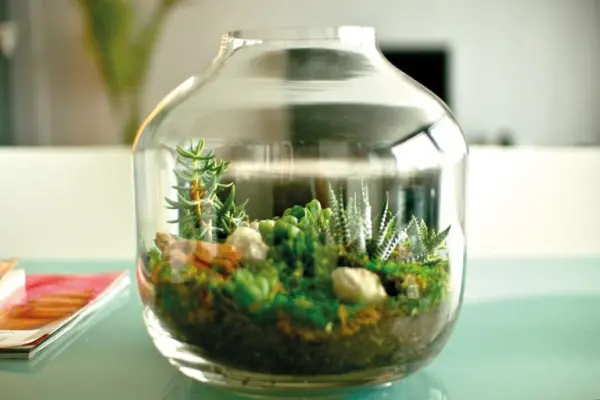Since ancient times, humanity has surrounded itself with plants. Our ancestors endowed them with supernatural properties and divine powers. With the emergence of dwellings, plants became not only a source of food but also a unique living element of interior design. In the twentieth century, the concept of "phytodesign" emerged — a combination of the Greek words "phyton" (plant) and "design" (planning). Today, biophilic design and indoor greening are becoming an integral part of the modern approach to space design.
"Well-chosen interior phytodesign is not just aesthetic pleasure, but also your personal air filter, natural humidifier, and generator of positive emotions. Plants work for us around the clock, improving quality of life and creating a special atmosphere of comfort" — Alexey Kurenkov, leading specialist in ecological space design.
The importance of phytodesign in modern interiors
Plants are the lungs of our planet, responsible for oxygen production. The absence of greenery negatively affects environmental indicators, emotional well-being, and public health. Phytodesign in interior spaces serves not only a decorative and aesthetic role but also helps absorb dust, regulate humidity, and enrich the air with oxygen essential for healthy human functioning.
Historically, the use of plant motifs in spatial design has deep roots. This was particularly evident at the end of the 19th century, when the Art Nouveau style first made floral ornaments and organic shapes the foundation of its artistic approach. Modern phytodesign continues these traditions by using live plants to create a harmonious connection between people and nature.
With proper plant placement in an apartment, one can create a unique natural accent that becomes the highlight of any room. Current trends in phytodesign include vertical gardening, interior terrariums, and a botanical style that emphasizes naturalness and organic beauty.
When choosing plants for different rooms, it's important to consider which aromas are suitable for a specific space:
- In the entryway, you can place coniferous plants, citrus, or basil. Coniferous plants emit a fresh, invigorating aroma, creating a pleasant atmosphere at the entrance to the house. Citrus fills the entryway with an aroma associated with cleanliness and freshness. Basil has a refreshing scent that helps relieve fatigue.
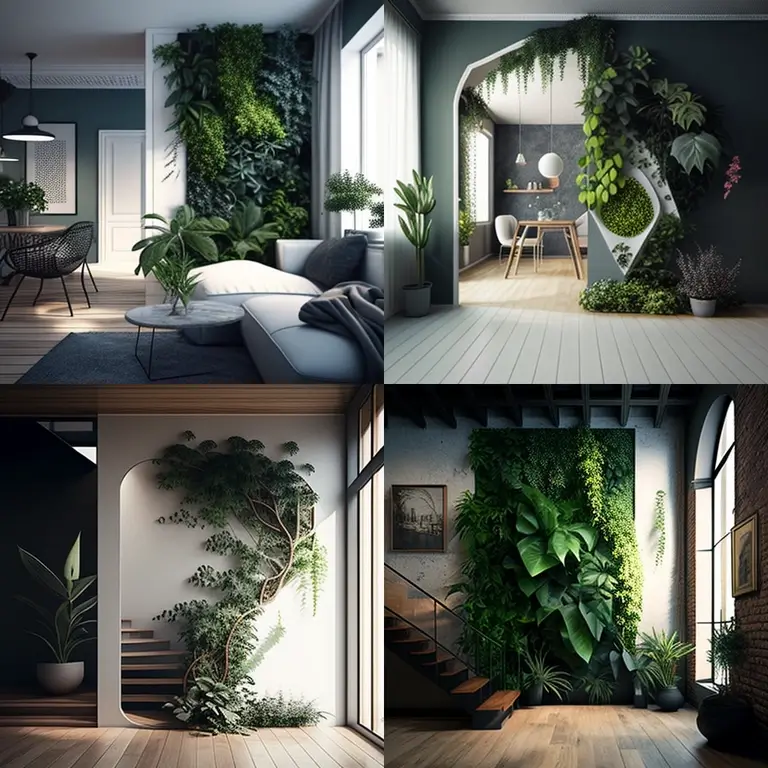
- Mint or fragrant melissa are ideal for the kitchen. Mint emits a light, cool aroma that harmonizes with the kitchen atmosphere. Melissa with its lemony scent creates a feeling of freshness and can be used in cooking.
- Calendula and chamomile are appropriate in a child's room. These flowers have a soft, soothing aroma, creating a relaxing atmosphere for a child's sleep and rest. Their bright hues bring a sunny mood to the space.
- Roses and lavender fit perfectly in the bedroom. Roses emit a sweet, romantic aroma that promotes relaxation. Lavender is known for its calming effect, helping you fall asleep faster and providing healthy sleep.
Instead of synthetic air fresheners, it's better to use indoor plants that saturate the air with natural aromas and oxygen, which is especially important for creating a healthy microclimate in the room.
Self-Creating a Favorable Microclimate Using Plants
You can create stylish greenery for a home, office, or apartment by yourself or by consulting a professional phytodesigner. By studying the necessary information, you will be able to choose suitable planters for phytodesign, determine optimal lighting for indoor plants, and create harmonious plant compositions.
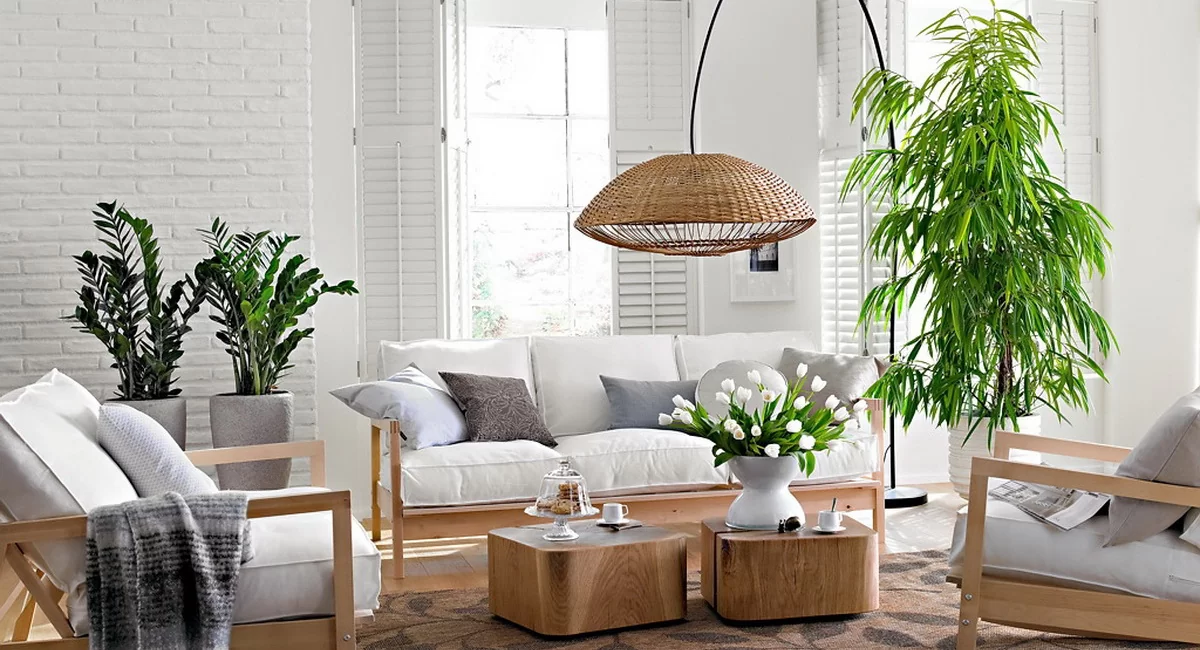
When decorating a room with plants, remember the main rule of phytodesign: don't turn your apartment into an impenetrable jungle! An excess of plants and aromas can lead to eye fatigue and headaches. Here are some basic principles of green interior:
- The color scheme of plants should correspond to the overall color solution of the interior.
- Low-growing flowers are better grouped to create compositional integrity.
- Vegetation should emphasize the advantages of the room's design.
- Broad-leaved palms visually expand the space, making them ideal for small rooms.
- Climbing and hanging plants look impressive on high shelves, creating a sense of natural cascade.
By applying knowledge of interior phytodesign and modern decor, you can create a unique atmosphere of living nature at home.
We offer you to familiarize yourself with a comparative table of plants for different types of rooms, which will help you choose ideal options for your interior:
| Room Type | Recommended Plants | Care Features | Design Effect |
|---|---|---|---|
| Living Room | Ficus, monstera, palms | Moderate watering, regular spraying | Creating accents, visual zoning of space |
| Bedroom | Sansevieria, dracaena, lavender | Watering once every 7-10 days, minimal spraying | Relaxing atmosphere, air purification at night |
| Kitchen | Chlorophytum, mint, basil, aloe | Abundant watering, bright lighting | Functionality (use in cooking), odor absorption |
| Bathroom | Ferns, spathiphyllum, calathea | Minimal watering, high humidity | Creating a spa atmosphere, tropical accent |
| Office | Zamioculcas, epipremnum, cacti | Moderate watering, resistance to dry air | Increasing productivity, reducing stress, focusing attention |
This table demonstrates that for each room there are optimal plant options that will not only aesthetically fit into the interior but will also feel good in specific conditions.
Plant Care in the Phytodesign System
The health and attractive appearance of indoor plants directly depend on proper care. Watering, feeding, and pruning are key factors requiring special attention when creating and maintaining a home ecosystem.
Water is the source of life for any vegetation in the interior, so it's important to maintain an optimal level of soil moisture. Overwatering can lead to root rot, while under-watering leads to wilting. Periodically check the soil for moisture, tracking the watering needs of each plant. For plants with different water requirements, it's recommended to use separate containers. For convenience, you can also use automatic watering systems for plants, which significantly ease the care of green decor.
Regular feeding with complex fertilizers provides plants with the necessary nutrients for growth and flowering. Follow the instructions on the package and don't overdo it to avoid excessive accumulation of salts in the soil.
Timely pruning will help form a neat crown of the plant and stimulate the growth of new shoots. Remove dried, damaged, or crowding branches. For climbing and ampelous plants, pruning is also necessary to form an aesthetic shape.
"Research shows that natural elements in the interior increase cognitive functions by 26%, reducing fatigue and stress. Biophilic design touches deep psychological mechanisms connecting humans with nature. When designing a workspace, this is especially important — properly selected office phytodesign contributes to increased concentration and productivity, as confirmed by the results of research on the impact of plants on the microclimate and psychological state of employees" — noted in scientific publications on biophilic design.
Technologies and Trends in Phytodesign 2025-2026
Modern technologies significantly ease the maintenance of vegetation and expand opportunities for creating an impressive plant accent in the interior. Innovative solutions make phytodesign accessible even for those who lack experience in integrating plants into space.
Automatic watering systems with timers and humidity sensors can maintain an optimal moisture level in the soil. They reduce the risk of under-watering or overwatering, ensuring comfortable conditions for plants even in the absence of owners. Such systems are especially relevant for creating a living wall in the interior, which requires regular and even watering.
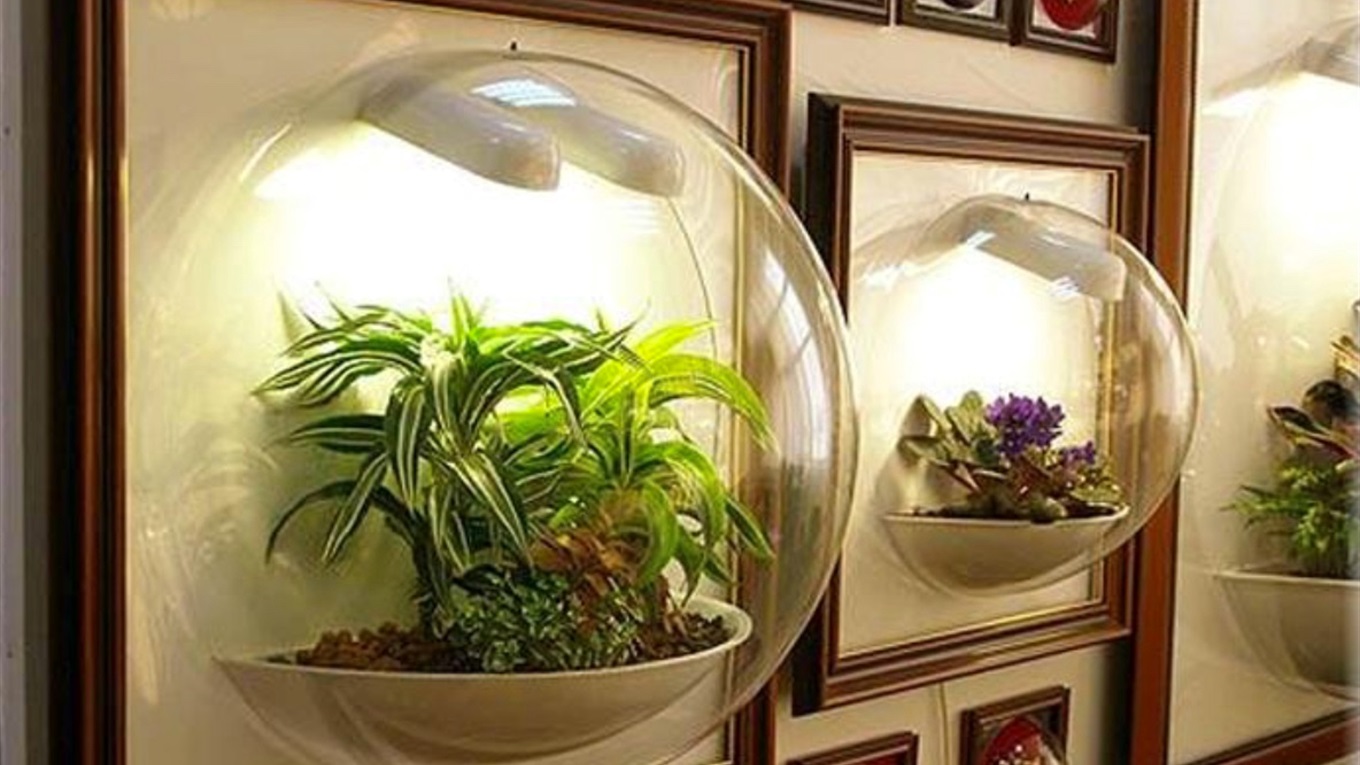
According to forecasts for 2025-2026, the following trends will dominate in phytodesign:
- Biophilic design with an emphasis on well-being – research presented in the journal Frontiers of Architectural Research confirms that plant elements in the interior contribute to increased psychological comfort, increased productivity, and general human well-being. Indoor plants in design will be perceived not just as a decorative element but as a necessary component of a healthy living space.
- Phytomodules in the interior – modular systems with integrated humidity and lighting sensors, which can be combined in various configurations, creating beautiful plant compositions in any part of the room.
- Psychology of green color perception – designers will rely more on research about the influence of various shades of green on the psychological state of a person, selecting plants not only by form but also by color combinations that promote relaxation or, conversely, increased concentration.
- Artificial vs. living plants – the emergence of high-quality artificial plants, visually indistinguishable from living ones, will create a new trend for combining both types in the interior, especially for areas with unfavorable conditions for living plants.
Specialized LED lighting for indoor plants is becoming increasingly popular in plant space design. Such lamps emit light with a spectrum as close as possible to natural sunlight. This is especially relevant for plants for north-facing windows and other rooms with a lack of natural light.
Vertical gardening and modular systems allow efficient use of wall space for creating living green compositions. Modern phytomodules in the interior are equipped with built-in watering and drainage systems, making care for domestic flora as simple as possible.
For those just beginning to master phytodesign, there are special applications that help determine plant needs, remind about watering and feeding, and also offer recommendations for caring for specific species. This is especially useful when choosing unpretentious plants for beginners.
Success Story: Green Transformation of an Urban Apartment
Anna, an interior designer from Moscow, lived for a long time in a typical two-room apartment with limited access to natural light. The space seemed lifeless and boring despite modern furniture and finishes. The solution came unexpectedly when at a professional exhibition, she saw concepts of biophilic design.
"I always thought that in my apartment with north-facing windows, plants would simply not survive," says Anna. "But after consulting with a specialist in interior phytodesign, I learned about many shade-tolerant plants that can thrive even with minimal lighting. We started with several unpretentious species: sansevieria, zamioculcas, and pothos. After six months, my apartment was transformed beyond recognition! The air became fresher, there was a sense of connection with nature, and the interior acquired a unique character. The most amazing thing is that plant care turned out to be much simpler than I expected, thanks to the right selection of species and a modern automatic watering system."
Today, Anna's apartment has more than 30 different plants, including mini-terrariums and vertical greening in the kitchen. This green transformation not only improved the aesthetics of the space but also positively affected the physical and emotional well-being of the owner.
Avoiding Common Mistakes in Phytodesign
When creating a plant accent in the interior, it's important to avoid common mistakes that can spoil the overall look and lead to the suppression of plants. Competent planning and understanding the characteristics of each species will help create a harmonious green interior and the right combination of plants with furniture and styles.
The first and most common mistake is overloading the space with an excessive number of plants. This can create a sense of disorder, make cleaning difficult, and limit access to light and air for individual specimens. To create harmonious phytodecor, it's important to maintain a balance between open space and plant groups, especially in conditions of plants for a small apartment.
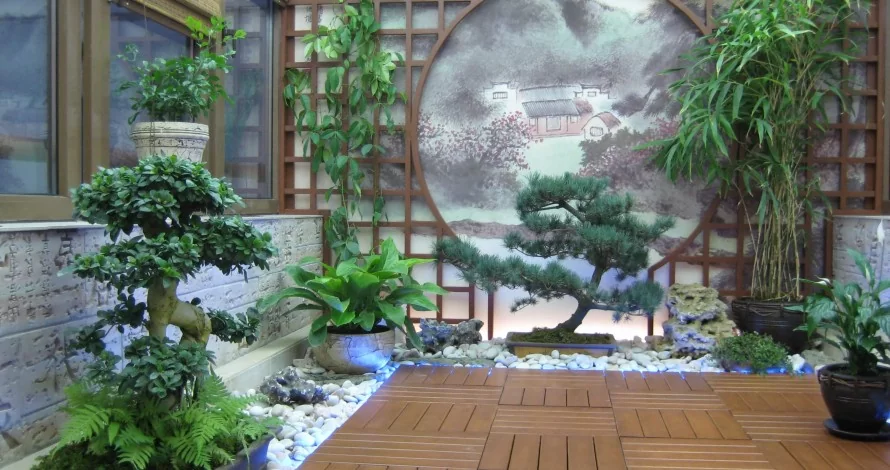
The second mistake is related to improper selection of plants taking into account the conditions in the room. Carefully study the plants' needs for lighting for indoor plants, humidity, temperature, and container volume before purchasing. Placement of plants for different rooms should take into account their specific requirements — what feels great among plants in a bathroom with high humidity might die in the dry air of a living room.
The third mistake is ignoring the compatibility of forms, textures, and colors of plants with each other and with the overall interior. Even the most beautiful plant compositions can look inappropriate if they don't correspond to the style of the room. This is especially true regarding the cost of apartment greening — unsuccessful selection or placement can devalue even expensive specimens. To create a cohesive composition, it's important to consider not only plant species but also pot design, hanging planter ideas, and stands.
The fourth mistake is neglecting the maintenance of greenery. Insufficient or excessive watering, lack of feeding, untimely transplanting can lead to loss of decorativeness or even death of plants. Regular care for domestic flora is the key to beautiful and healthy phytodesign.
The fifth common mistake is a misconception about mini-gardens in the interior. Many beginning enthusiasts try to create overly complex compositions without considering the compatibility of plants in terms of maintenance conditions. It's better to start with simple but harmonious solutions, gradually developing your skills in creating more complex plant ensembles.
Finally, a common mistake for beginners is choosing too demanding species. For the first experience, it's better to opt for unpretentious plants for beginners, which forgive some mistakes in care and adapt to various conditions, including plants for north-facing windows and other problem areas.
Conclusion: Harmony of Nature and Comfort
Interior phytodesign is the art of creating a harmonious space where plants not only complement the setting but become a full-fledged functional element affecting the quality of life. Competent greening of premises contributes to improving the microclimate, purifying the air, and creating a special atmosphere that positively affects the physical and emotional state of a person.
Modern approaches to plant accents in the interior combine aesthetic principles with practical aspects of maintaining greenery, making phytodesign accessible even for busy urban residents. Vertical gardening, modular systems, automatic watering, and specialized lighting for indoor plants open new possibilities for creativity and self-expression through green elements in the setting.
Remember that the secret to successful phytodesign lies in a harmonious balance between aesthetics and functionality, between ambitious ideas and a realistic assessment of your capabilities in plant care. Start small, experiment, and gradually transform your home into an ecological space filled with life and natural beauty.
